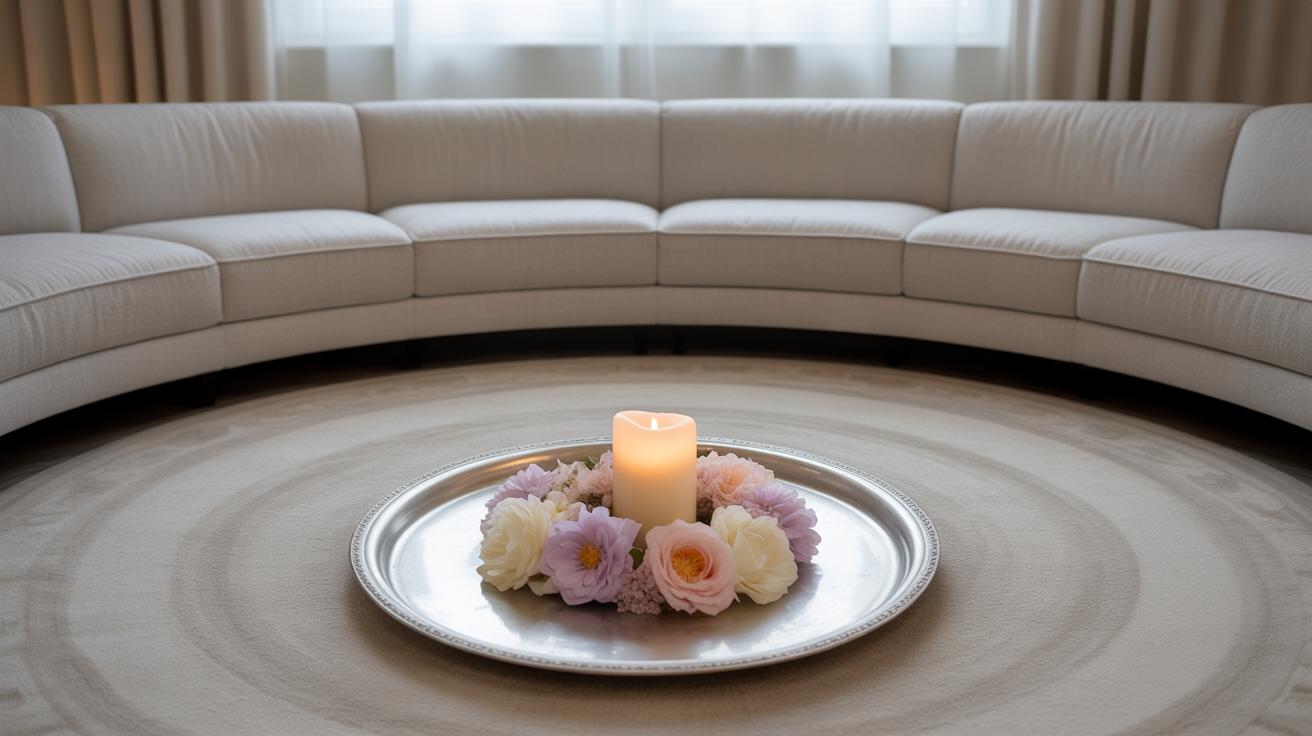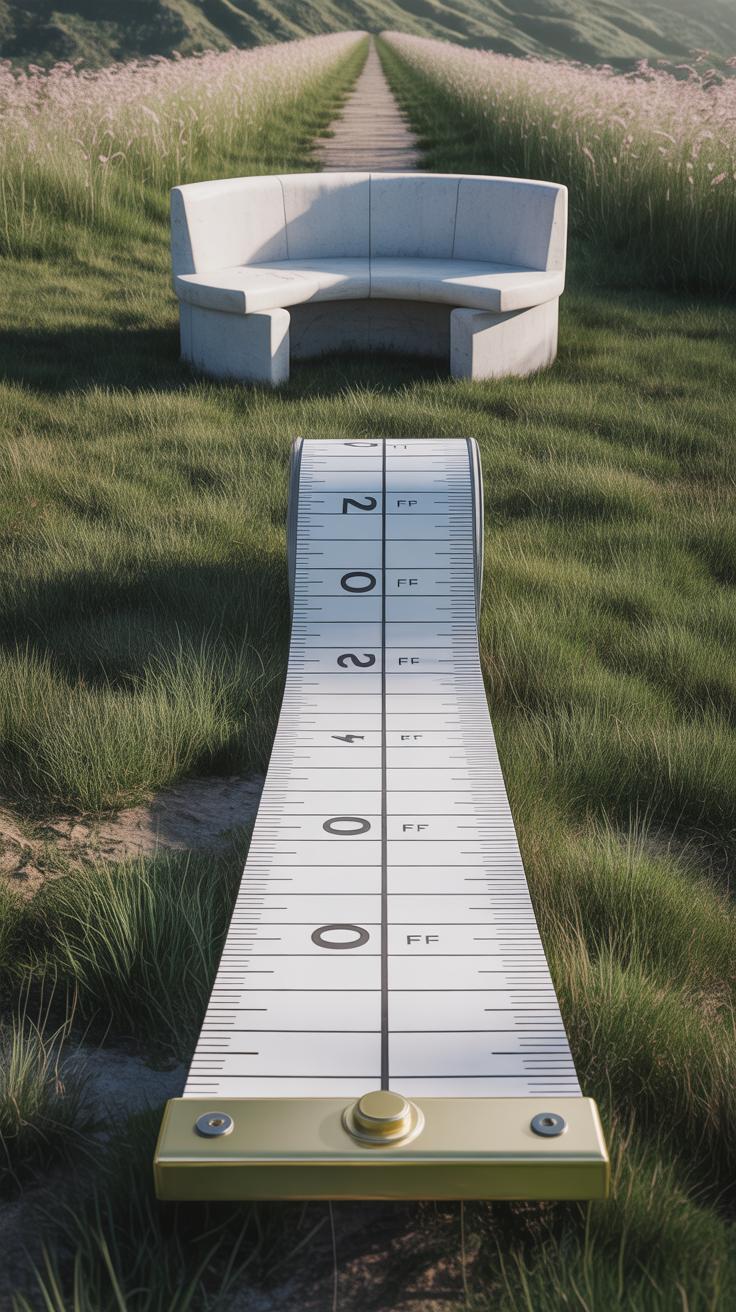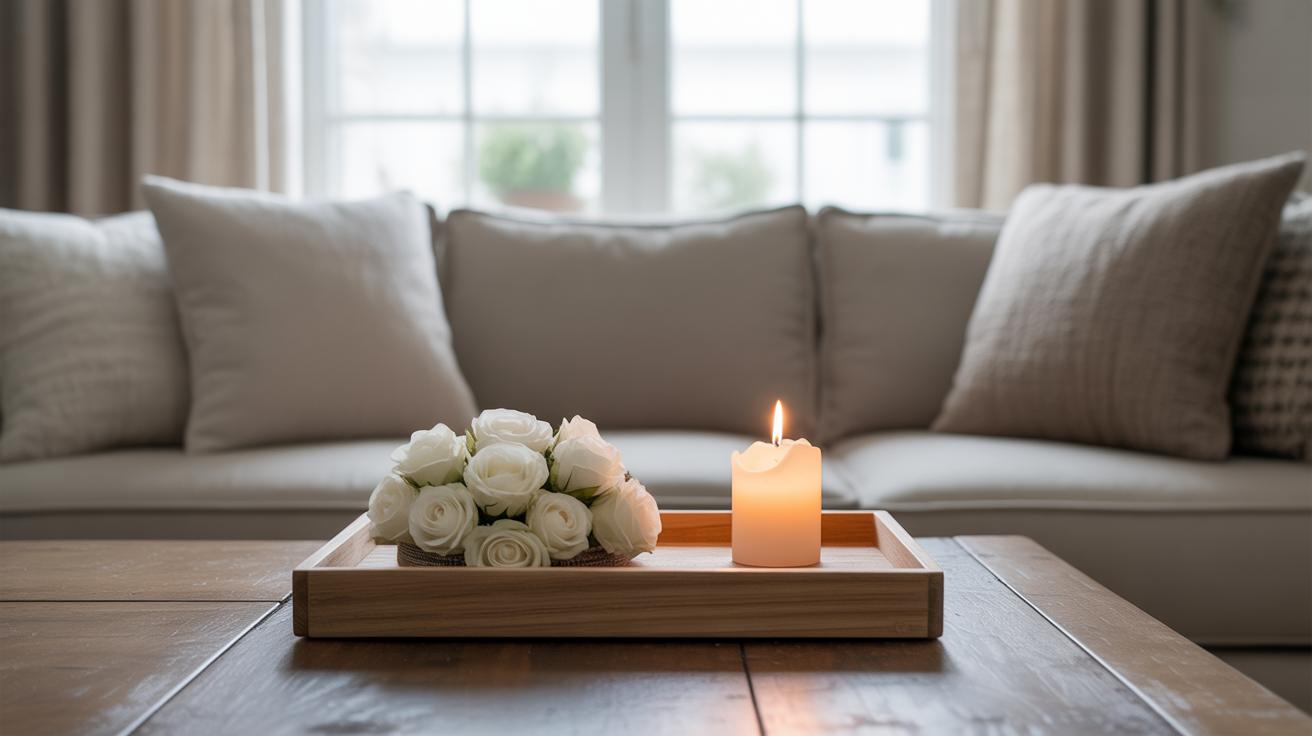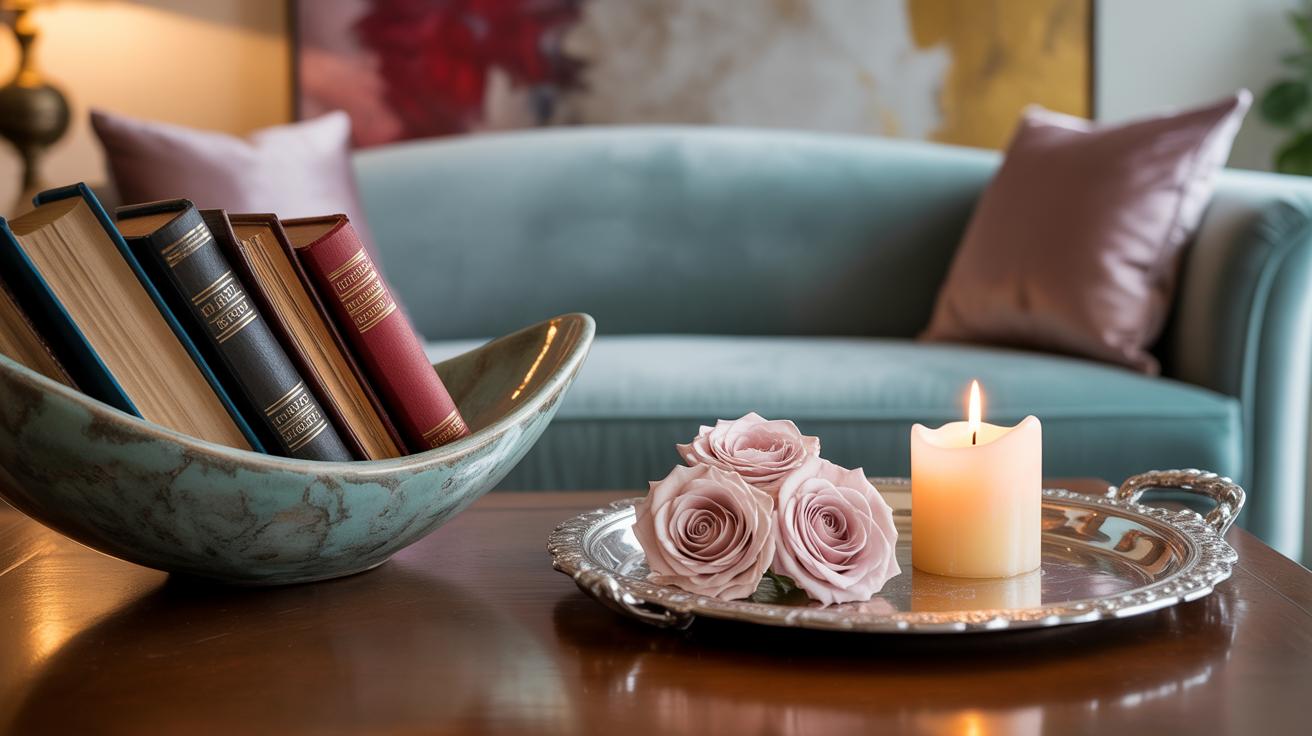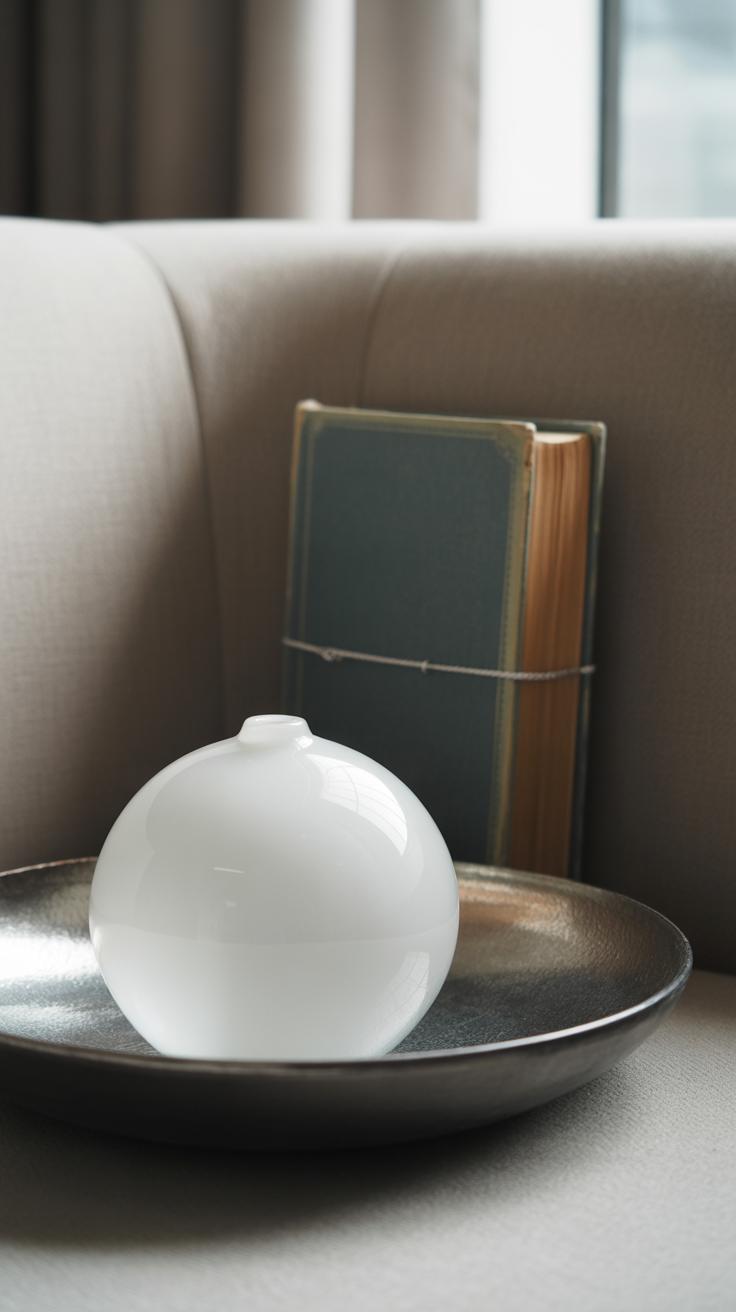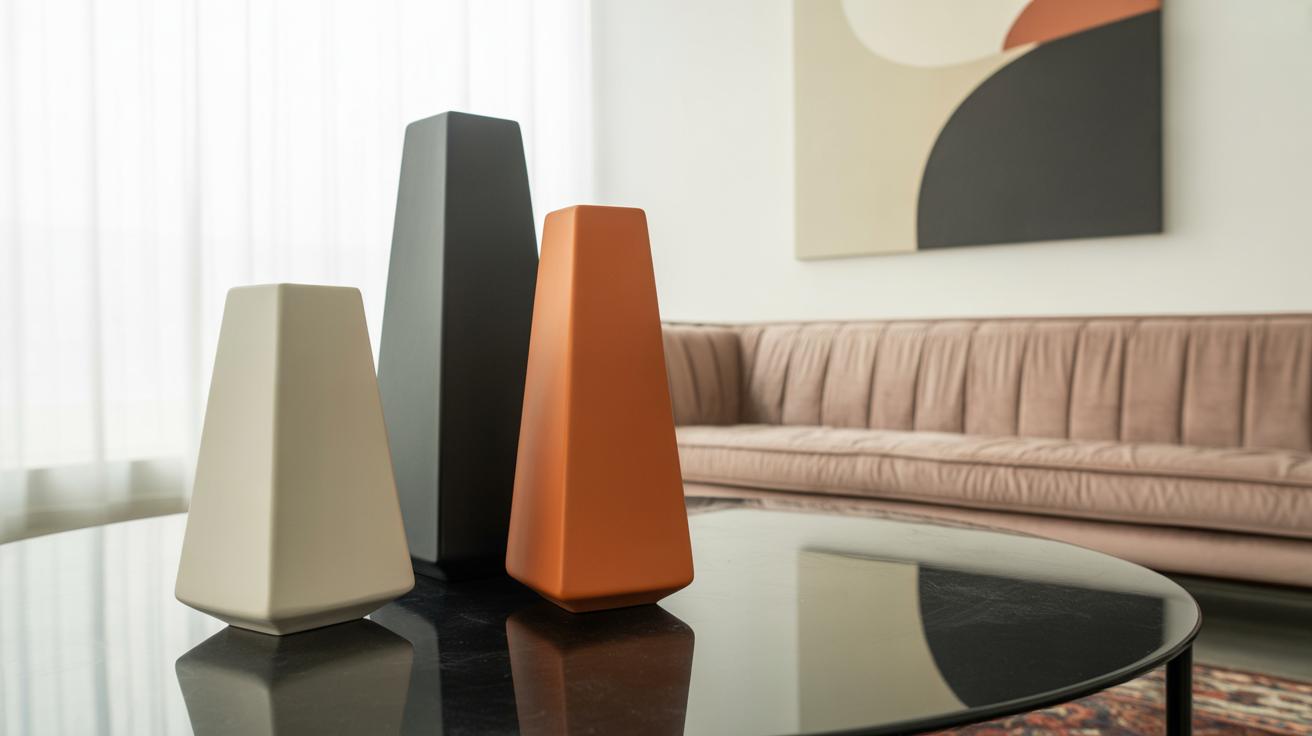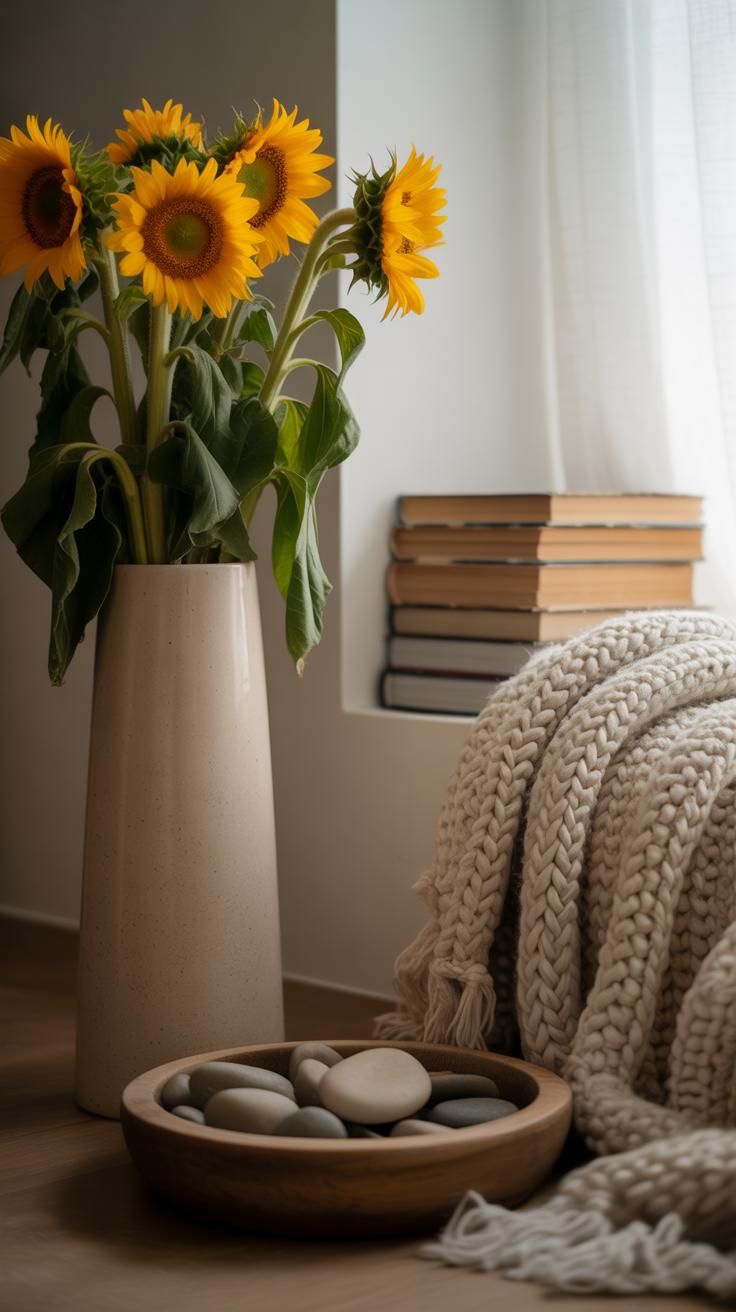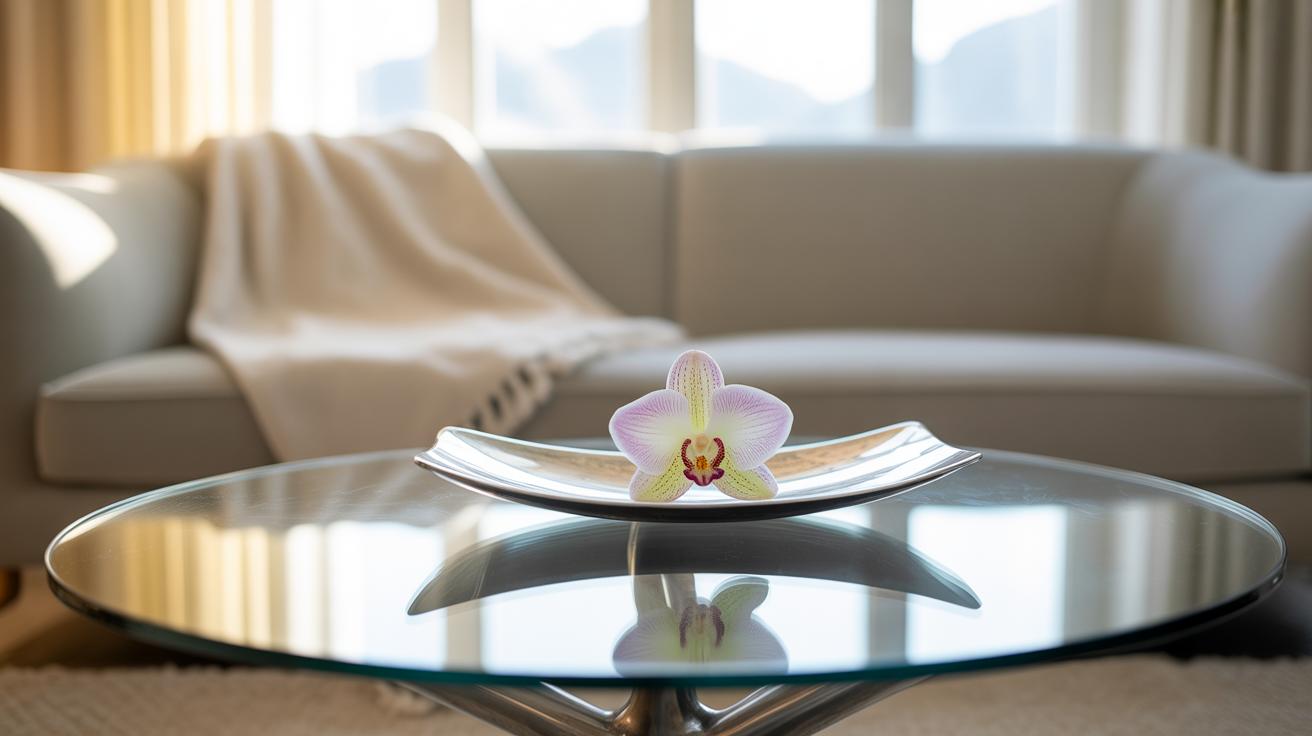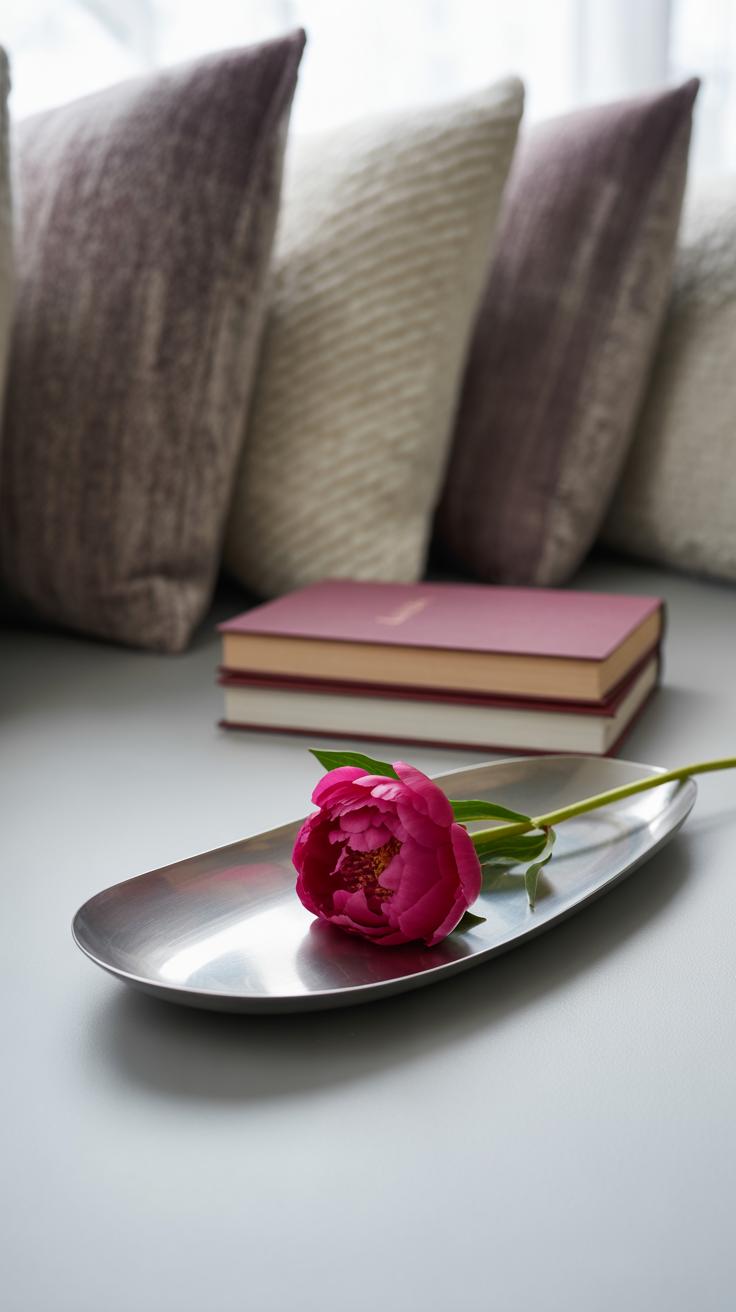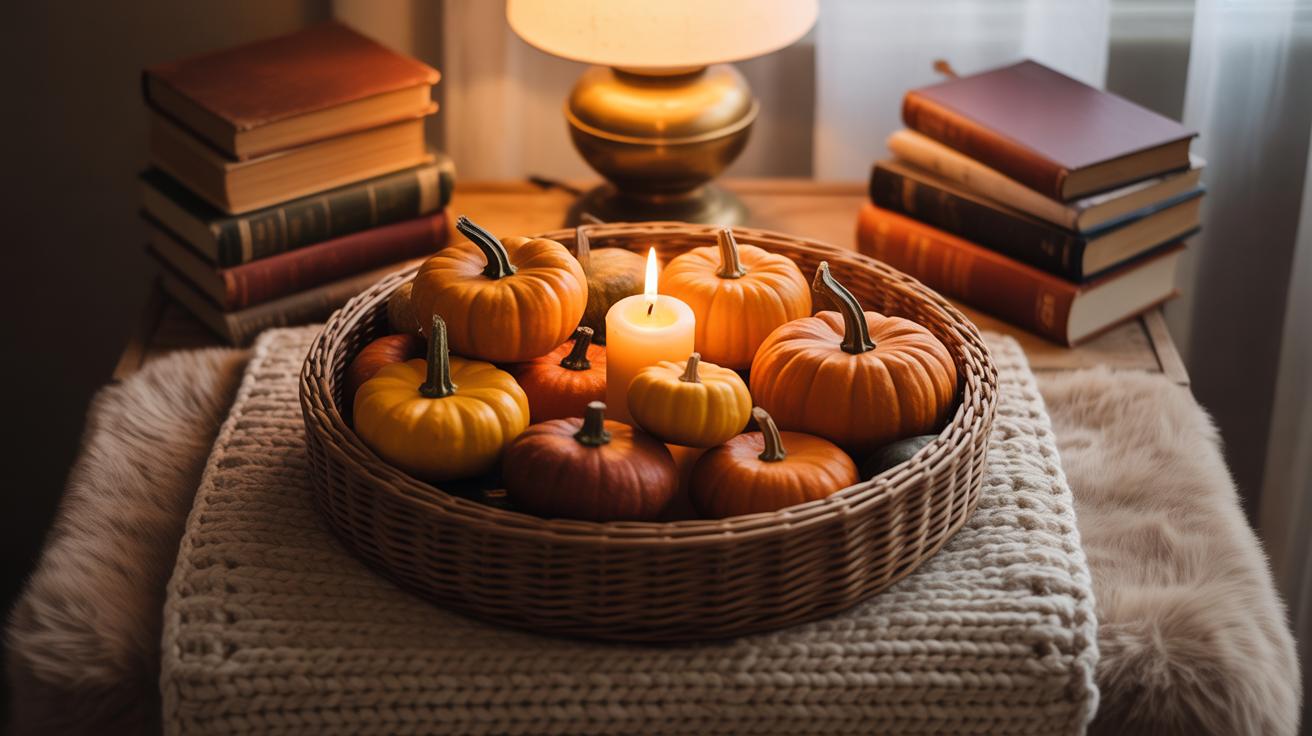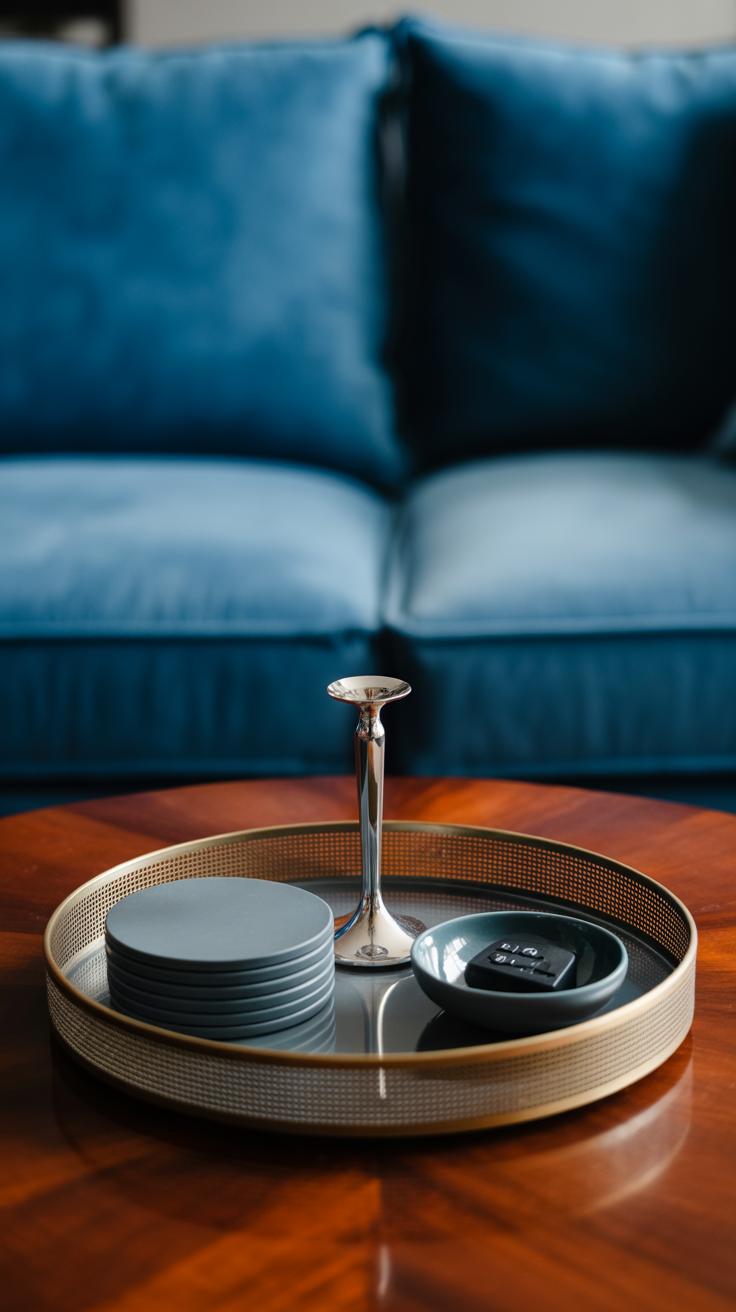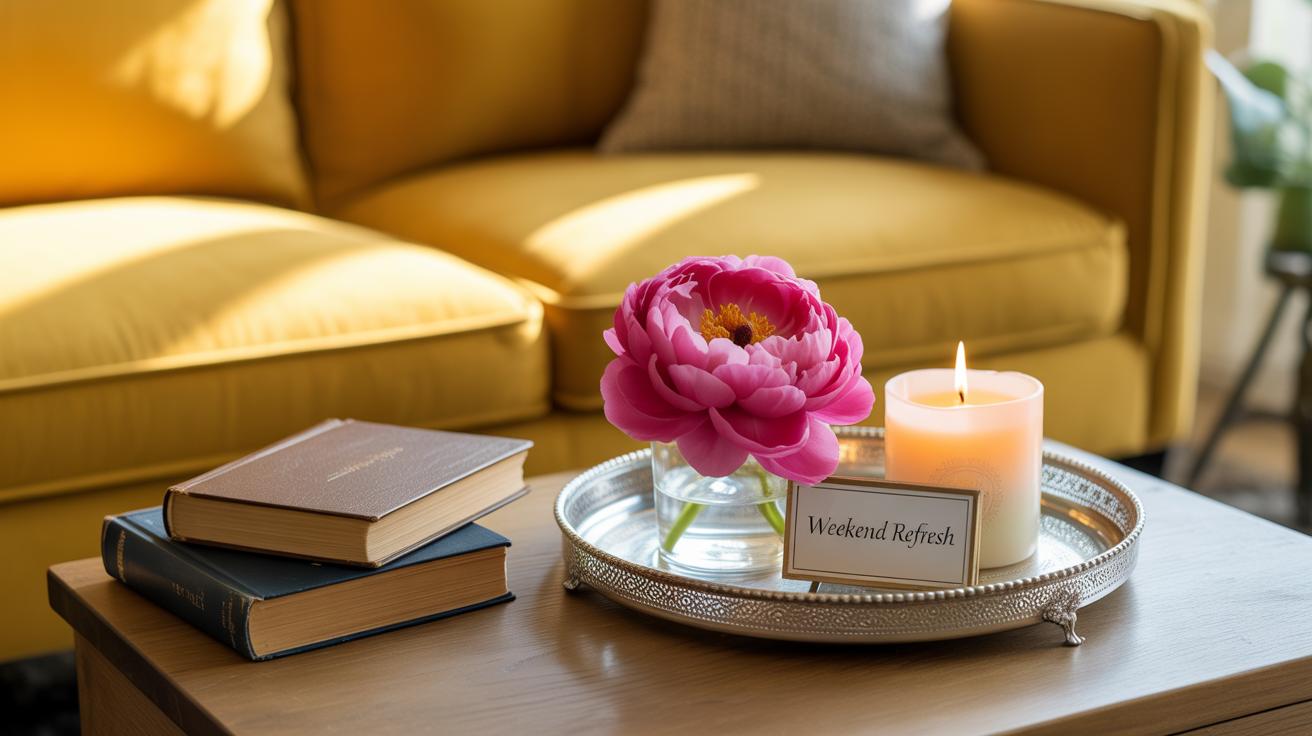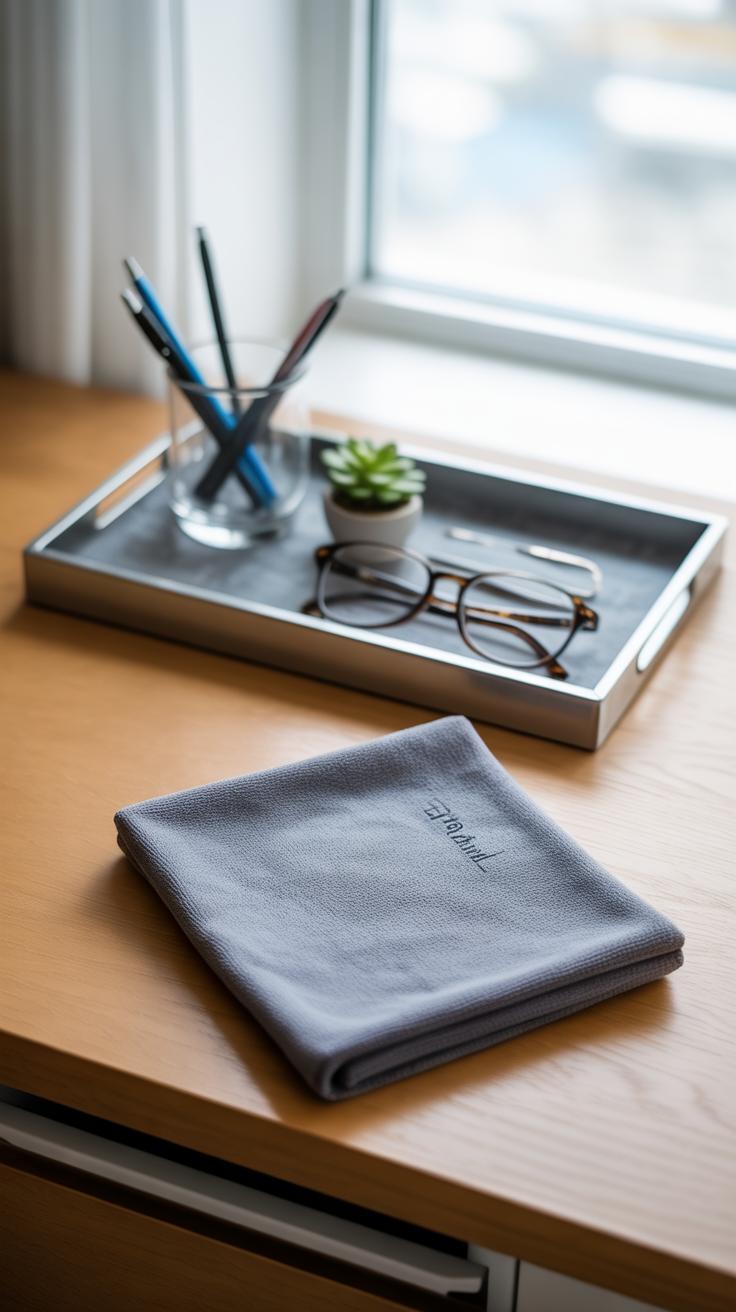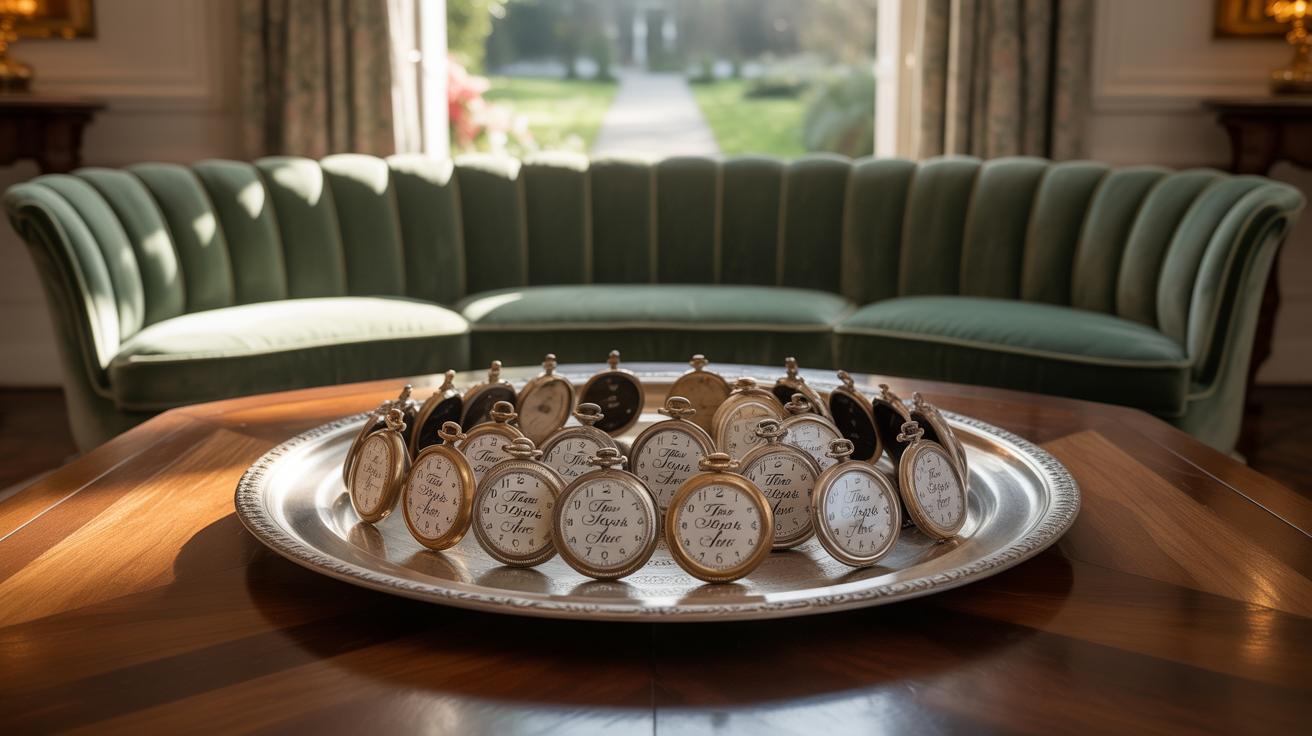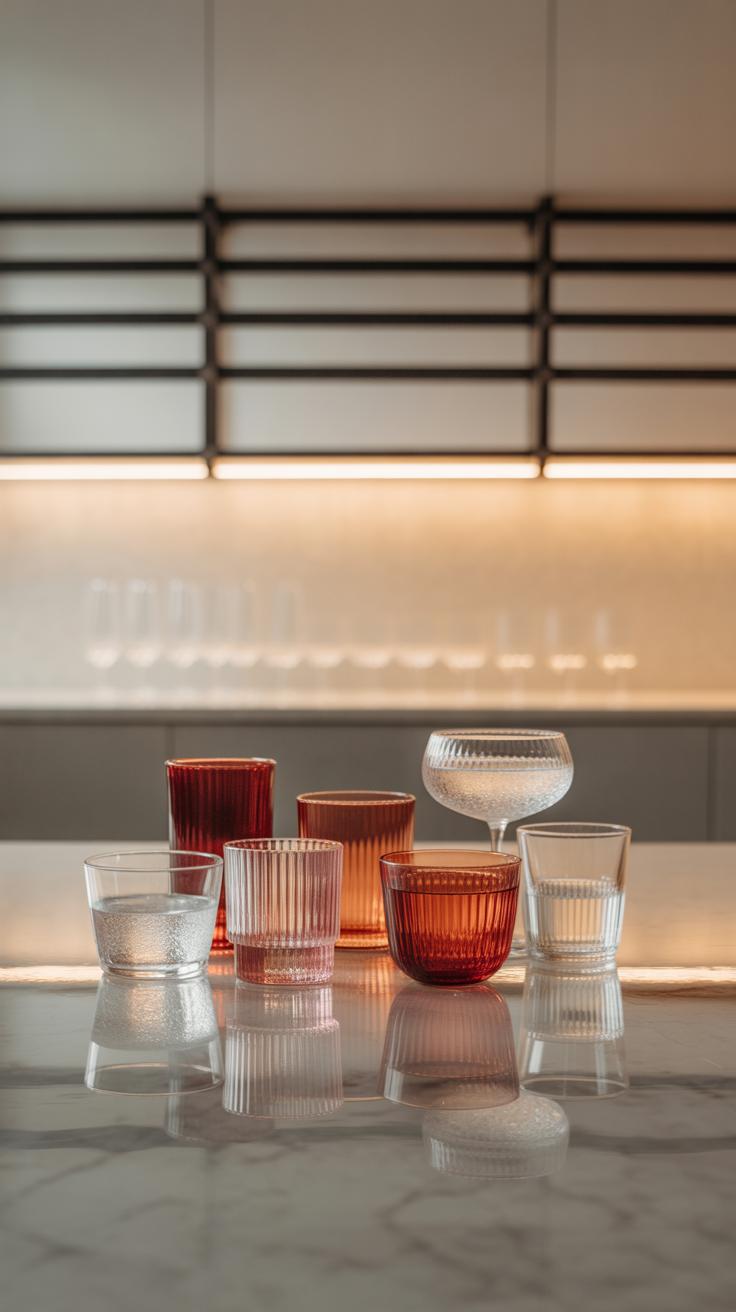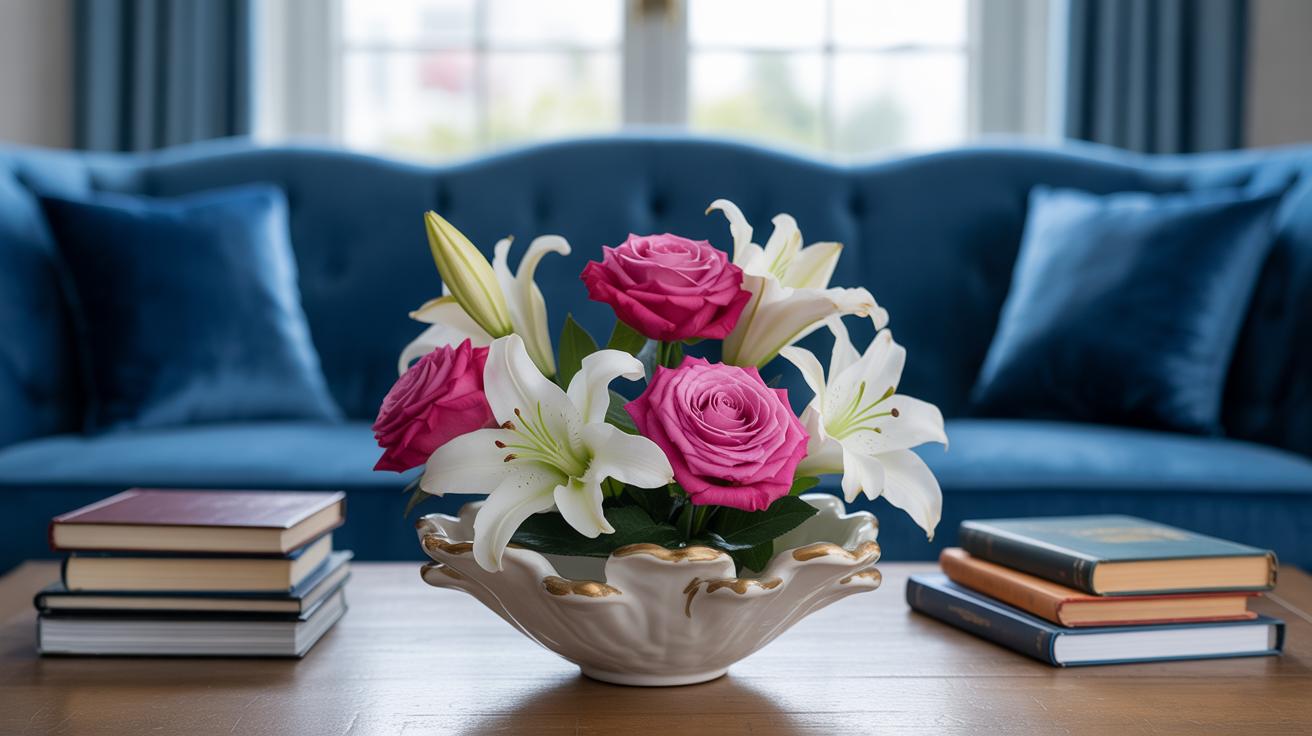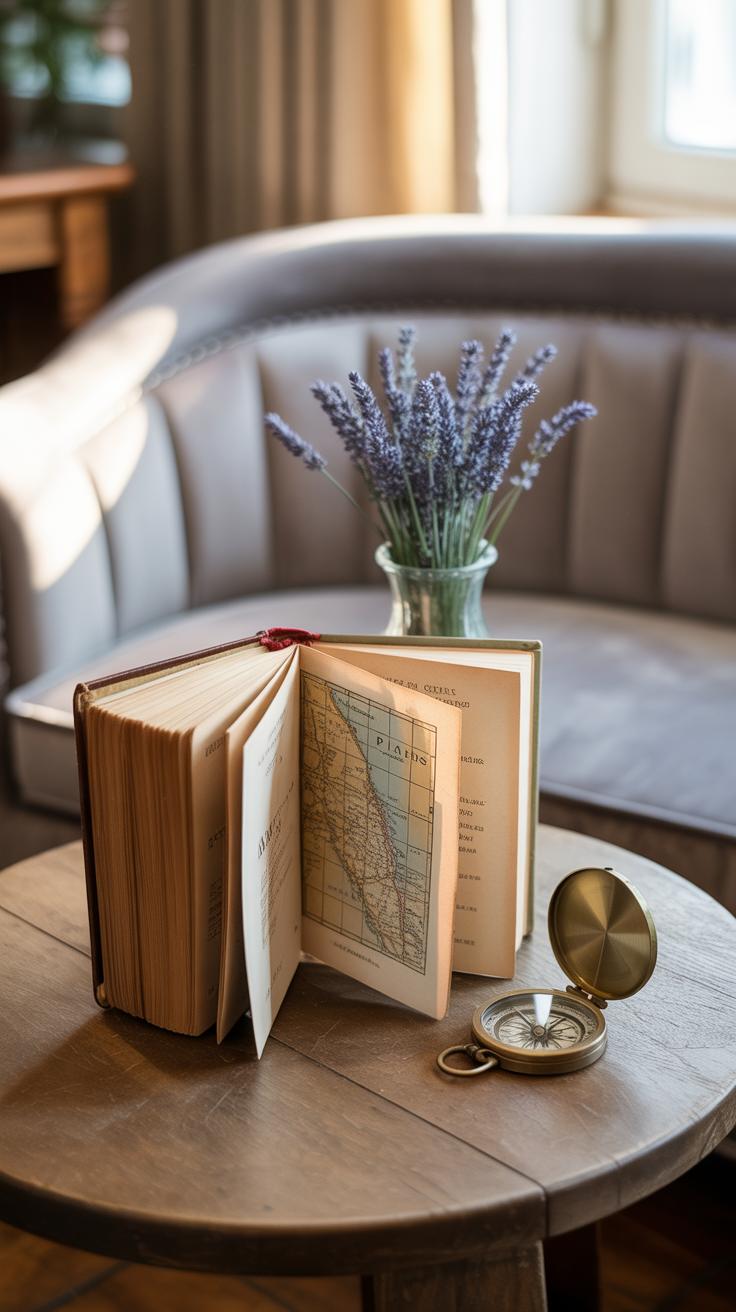Introduction
Round coffee tables can be a lovely centerpiece in any living room. They bring softness and flow to your space thanks to their circular shape. But decorating these tables to look both balanced and chic takes some thought. You want your table to feel inviting and neat without being overcrowded.
In this article, you will learn easy tips on how to decorate a round coffee table. From picking the right decorations to placing them just right, you will discover ideas that fit your style while keeping your table balanced and pleasing to the eye. You will also find advice on materials, colors, and themes that work well on round tables. Let’s explore how to make your coffee table a stylish focal point in your room.
Understanding the Shape and Scale of Your Round Coffee Table
The shape and size of your round coffee table play a bigger role in styling than you might expect. Unlike rectangular or square tables, the circular form naturally encourages a more intimate arrangement of décor. But it also limits what you can place on it to keep the space from feeling cluttered or off-balance.
Think about the dimensions in practical terms: the diameter tells you the surface area available, while the height informs the perspective from which you’ll view the items. Too many items on a small table can feel cramped, while a very large table might look sparse if under-decorated.
Measuring Your Table and Space
Start with the diameter — measure straight across the widest part of your round table, from edge to edge. Don’t forget the height; that affects how your décor sits visually and interacts with surrounding furniture. You want to consider the space around the table, too. Is it a tight spot between a sofa and chairs, or a more open area? That influences your choices as much as the table itself.
Walk around your table and imagine accessing items from all sides. Can people reach decorations easily without knocking things over? Measuring the clearance between the table and nearby seating helps decide whether bulky décor pieces will fit or feel intrusive.
How Size Influences Decoration Choices
Larger tables give you more freedom to mix various items. For example, you might layer a tray, a couple of books, a plant, and a candle together. You can venture into grouping smaller items without the risk of overcrowding — but there’s still a balance to strike, because too many pieces can dilute the style.
Smaller tables, on the other hand, call for restraint. One or two well-chosen pieces usually work best. Simple arrangements feel cleaner here and avoid overwhelming the surface. It can be tempting to fill every inch, but less often ends up feeling more polished and intentional.
So, how many items can your table hold without feeling overwhelming? Maybe three, maybe one—it really depends on dimensions, yes, but also personal taste and the vibe you want to create. Don’t hesitate to experiment and step back to observe whether the table looks inviting or cluttered. After all, the goal is harmony, not perfection.
Selecting Decorative Items That Complement Your Table
When you’re choosing decor for a round coffee table, it’s tempting to add a little bit of everything, but that’s rarely the best move. Think about items like trays, books, plants, and candles—each can enhance the table’s look, but only if you resist overcrowding. The round shape naturally draws the eye inward, so keeping a sense of openness is key.
Trays are surprisingly helpful here. By grouping smaller items on a tray, you create a focused area that feels intentional rather than scattered. It helps contain things, making the surface look tidy without feeling sparse. I’ve found that even on smaller tables, a tray can hold candles, a small plant, or a few books neatly. You get style and organization in one.
Plants or flowers bring life and freshness to the table, which is hard to beat. I usually choose compact options—think succulents, small ferns, or a simple bud vase. They don’t take up much room but add a natural contrast against trays or books. Plus, fresh flowers have that occasional wow factor, though they do require upkeep.
Pay attention to scale. A single tall candle or a slim stack of books fits well if the rest of your items stay low and simple. It’s a bit of a balancing act, no doubt. But when the table feels neither cluttered nor empty, you know you’ve nailed it.
Creating Balance with Varying Heights and Textures
If your round coffee table feels a bit flat or uninspired, playing around with different heights and textures might be what it needs. It’s not just about throwing things together but finding a way that the varying elements talk to each other. Imagine stacking a couple of hardcover books to create a small platform next to a taller candle or a sleek vase. This layering breaks the monotony and catches the eye.
Try mixing things like:
- A tall, slender vase versus a short, squat candleholder
- Books stacked horizontally or slightly askew—nothing too precise
- Objects that draw the eye up and others that ground the arrangement
Textures play a similar role. You could pair a smooth glass bowl with a rough wooden tray or contrast a soft fabric coaster with a cold metal sculpture. That mix adds richness and depth, making the table far from boring. Still, it’s tricky—not every texture works together, and sometimes too many materials can look cluttered. But that’s part of the experimentation, right? Sometimes I find an unexpected combo that just clicks.
What kind of texture do you find yourself gravitating toward? Natural wood or cool metals? These choices influence the overall mood of your space more than you might realize. So, think about texture and height not just as separate details but as partners in creating a balanced and inviting coffee table.
Color Coordination and Theme Setting
Choosing a color palette for your round coffee table can be a subtle but powerful way to pull your whole room together. You might want to start by looking around—what colors dominate your space? Are the walls neutral, or do you have bold-colored furniture? Picking shades that echo or gently contrast with the room can create a sense of harmony without becoming boring.
Imagine a room with cool blues and grays; a coffee table decorated in warm tones like ochre or soft terra cotta could add warmth without clashing. Or, keep things unified by sticking to a monochromatic color scheme—using various shades of one color, such as different greens, which can feel cohesive and intentional, but not too matchy.
When it comes to themes, the style you pick guides your choices in surprising ways. A rustic theme might include wooden trays, vintage books, and natural fibers—things that feel earthy and lived-in. On the other hand, a modern theme pushes toward sleek lines and minimal objects, maybe a sculptural vase or geometric coasters. Coastal themes often bring in light colors, shells, or glass elements that evoke the beach without trying too hard.
It’s a bit of a balancing act, picking between matchy-matchy or mixing wildly. You could even blend themes—say, a modern table with a few rustic touches—to make your decor feel personal and less staged. What kind of mood do you want your coffee table to set? That question can lead you in unexpected but satisfying directions.
Using Functional Items as Part of Your Decor
When decorating your round coffee table, it’s easy to get caught up in purely aesthetic choices. But mixing function with style adds a layer of authenticity you can’t really fake. Items like coasters, books, or bowls aren’t just useful—they become part of the visual story.
Incorporating Books and Magazines
Stacking a few books on your table can be an effortless way to inject personality. Pick titles that mean something to you, perhaps a mix of art, travel, or even your favorite novels. You don’t have to aim for an overly curated collection. Sometimes, a casual stack, slightly off-center, makes things feel approachable rather than staged.
Magazines can work too, especially if you flip through them regularly. This way, your coffee table invites interaction. Just make sure the covers align with the vibe you want—classic design, current affairs, or something quirky. Books and magazines have weight, so they create visual anchors without overwhelming the space.
Adding Practical Pieces Like Bowls and Coasters
Bowls or trays aren’t just decorative fillers. They hold small items like keys, remotes, or a handful of seasonal fruits, preventing clutter while enhancing the look. A nicely shaped bowl can add softness or texture, depending on its material—wood, ceramic, glass—so consider what feels right for your room.
Coasters are another small but significant detail. They protect your table, sure, but they can also express your style—think sleek marble, woven fabric, or leather. When guests come over, having coasters handy subtly suggests you care about both comfort and design. It’s a simple way to combine form and function without fuss.
Maintaining Your Round Coffee Table Decor
Keeping your round coffee table looking balanced and chic over time takes a bit of attention. It’s easy for surfaces to collect dust or for decor to feel stale when left untouched. I find that a quick wipe-down once a week makes a surprising difference—you’ll notice how much brighter everything looks afterward.
Besides cleaning, decluttering regularly helps keep the display from overwhelming the space. Think about removing items you don’t love anymore or rotating pieces every few weeks. Even something small, like swapping a candle for a small stack of books, can revive the look.
Seasonal swaps are a great way to refresh without overhauling everything. For fall, maybe add warmer tones or natural elements like pinecones. Spring invites lighter, airier accents, and a little greenery often works wonders regardless of the season.
Sometimes, you might want to tweak your table decor to fit a new mood or style you’re leaning toward. This can mean introducing a sleek metallic item after months of rustic wood, or just rearranging what’s already there. It’s a bit like giving your space permission to change gently—not all at once, but in thoughtful steps.
Avoiding Common Decoration Mistakes
Recognizing Overcrowding
Sometimes it’s tempting to fill every inch of a round coffee table with decor. But when does it cross the line? If you find yourself constantly bumping into objects or struggling to use the table for its intended purpose, that’s a sign. Too many pieces—especially if similar in size or shape—can create visual noise rather than harmony.
To avoid this, think in layers rather than quantity. Choose a few standout items, like a sculptural vase or a stack of stylish books, instead of scattering lots of small knickknacks. Clearing a bit can make the whole setup breathe; you might be surprised how refreshing less feels. Also, consider the table’s size—what works on a large round table might overwhelm a smaller one. Don’t hesitate to step back and remove something if the scene feels cluttered; sometimes you just can’t see the mess up close.
Creating Symmetry and Asymmetry Appropriately
Symmetry often brings a sense of calm and order. On a round coffee table, this could mean placing pairs of items opposite each other: two candles flanking a central bowl, for example. This tends to suit more traditional or formal spaces, giving predictability and balance. But that’s not the only way. Asymmetry can feel livelier and more natural. You might cluster a group of items—differing in height and shape—toward one side, then balance that with a single substantial piece on the other. This approach works well when you want energy and interest, but it’s easy to overdo and have the table feel lopsided.
Neither design rule is a strict law. Sometimes a mostly symmetrical layout with a slight intentional “off” element breaks the monotony nicely. Or an asymmetric display can still feel balanced if the weight and scale of each object are considered. Experiment a little—move things around and watch how the eye travels. Ask yourself: does it feel intentional, or just chaotic? Your answer will guide your next move.
Personalizing Your Round Coffee Table Decor
When it comes to making your round coffee table truly yours, adding personal touches can transform the space beyond simple style. You want your decor to tell a story—something about who you are without overwhelming the eye or creating clutter.
Try including a few meaningful objects like photos in simple frames or small souvenirs from trips. Maybe a tiny sculpture or a mini canvas that holds some sentimental value. The key is to keep these items manageable in size and number. For example, placing a framed photo next to a small, well-chosen plant can create a cozy corner, without feeling busy. You could even rotate these pieces now and then to keep things fresh.
It’s a bit of a balancing act, really. How much personality is too much? If you stack too many items, the table risks looking cluttered rather than curated. Instead, think about grouping a few things in odd numbers—three or five seems to work well visually. Let one or two personal items stand out while others subtly support the overall look.
Sometimes I’ve found that too much sentiment on display can make a space feel heavy, almost like a memorabilia shop. But when spaced thoughtfully, those personal pieces bring warmth and character, turning your coffee table into a small but meaningful gallery. It’s about letting your table reflect who you are, but always with a bit of room to breathe.
Conclusions
Decorating your round coffee table is about balancing beauty and function. By carefully choosing pieces you love and arranging them thoughtfully, you create a space that feels both stylish and inviting. Remember to keep your accessories varied in size and texture for interest, but not too many to avoid clutter.
With the ideas shared here, you can confidently style your round coffee table to fit your home’s look and your personal taste. Focus on simplicity, balance, and a mix of shapes to make your table a charming focal point. Your round coffee table can become a place that welcomes guests and adds personality to your living room.

